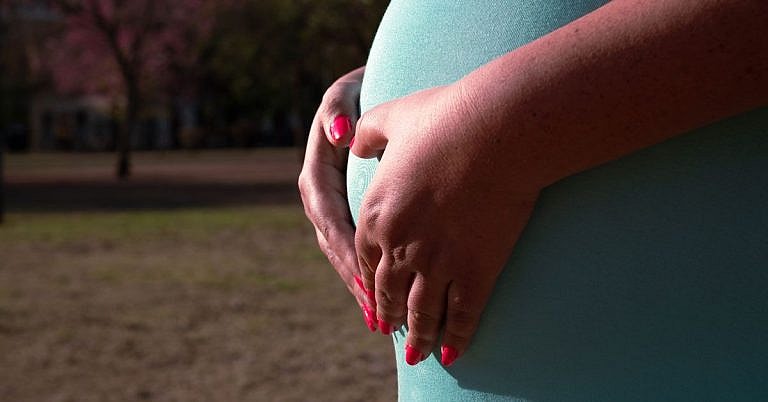What Is Chronic Hypertension with Superimposed Preeclampsia?
Chronic hypertension with superimposed preeclampsia occurs when a pregnant person with high blood pressure that’s preexisting or happens early in pregnancy develops preeclampsia. Early diagnosis and treatment is vital.
High blood pressure, also called hypertension, is common. In fact, nearly half of all adults in the United States have high blood pressure.
Having high blood pressure can contribute to a variety of health issues across your life span. It can also cause potentially serious problems during pregnancy.
People who have high blood pressure before or early into their pregnancy, called chronic hypertension, have a higher risk of developing preeclampsia. When this happens, it’s called chronic hypertension with superimposed preeclampsia.
Continue reading to learn more about chronic hypertension with superimposed preeclampsia. We cover all of the basics, including what it is, its symptoms, and how it’s diagnosed and treated.
What is chronic hypertension with superimposed preeclampsia?
Chronic hypertension is when you have high blood pressure before you get pregnant or when you develop high blood pressure early in pregnancy, before 20 weeks.
You have chronic hypertension if the following are true within this time window:
Pregnant people with chronic hypertension are at risk of preeclampsia and several other health issues, including:
Preeclampsia is a pregnancy complication where you have high blood pressure accompanied by other signs of organ problems, like:
When a pregnant person has chronic hypertension and develops preeclampsia, it’s called chronic hypertension with superimposed preeclampsia.
A 2021 review notes that 1% to 5% of pregnant people have chronic hypertension. Of these, 20% to 50% develop superimposed preeclampsia.
What are the symptoms of chronic hypertension with superimposed preeclampsia?
If you have chronic hypertension and develop preeclampsia, some of the symptoms you may experience include:
A 2024 study notes that preeclampsia tends to develop earlier and be more severe in people with chronic hypertension.
If left untreated, preeclampsia can worsen and may develop into a life threatening condition called eclampsia, in which you start to have seizures.
That’s why it’s important to call a doctor right away if you’re pregnant and notice you’re having symptoms of preeclampsia. Treatments can help prevent preeclampsia from worsening.
Does having chronic hypertension with superimposed preeclampsia affect the baby?
Having chronic hypertension with superimposed preeclampsia can have negative health effects on a baby.
Compared with preeclampsia alone, this condition has been associated with an increased risk of:
What causes chronic hypertension with superimposed preeclampsia?
People who have chronic hypertension often have high blood pressure before becoming pregnant. In fact, researchers estimate that 90% of people with chronic hypertension have it due to family history or lifestyle factors, which can include:
The cause of preeclampsia isn’t well understood. However, one contributing factor is believed to be low blood flow to the placenta. Having chronic hypertension may decrease blood flow to the placenta, meaning the risk for preeclampsia is higher.
Research from 2017 found that, compared with pregnant people without the condition, those with chronic hypertension had almost six times the risk of developing preeclampsia. Notably, this was even after adjusting for medical history and various maternal factors.
How is chronic hypertension with superimposed preeclampsia diagnosed?
Keeping tabs on your blood pressure is vital for any pregnant person, especially so for people with chronic hypertension.
A blood pressure reading will be taken at each prenatal appointment, but it’s also important to check your blood pressure regularly at home.
Contact your healthcare professional promptly if you’re having higher than normal blood pressure readings due to symptoms of preeclampsia.
If you have chronic hypertension, a healthcare professional can use several tests to diagnose superimposed preeclampsia. These tests are noninvasive and involve giving blood and urine samples.
The tests used to diagnose superimposed preeclampsia in a pregnant person with chronic hypertension include:
During this time and throughout your pregnancy, your healthcare professional will also do fetal ultrasounds to check on your developing baby’s health and growth.
What’s the treatment for chronic hypertension with superimposed preeclampsia?
If you have chronic hypertension, it’s likely that you’re already taking a blood pressure medication. You can continue to take blood pressure medications, although you may need to switch to one that’s safe to use during pregnancy.
Blood pressure medications that can safely manage chronic hypertension during pregnancy include:
Previous research was unclear on the benefits and risks of using medications to manage mild chronic hypertension during pregnancy.
However, clinical trial results from 2022 found that medical management of mild chronic hypertension led to better maternal outcomes without affecting the growth of the developing baby.
If you do develop superimposed preeclampsia, treatment can depend on whether your preeclampsia is severe.
Non-severe preeclampsia
If you have preeclampsia that’s not severe, your care team will continue to monitor you and your developing baby closely. You may need to visit the doctor more often and keep careful track of your blood pressure at home.
When you reach 37 weeks of pregnancy, your healthcare professional will talk with you about delivering your baby early. If you choose to deliver early, labor can be induced.
Severe preeclampsia
Severe preeclampsia is often treated in the hospital. Your care team may give you seizure medications to lower your risk of having seizures during this time.
If you’ve reached at least 34 weeks of pregnancy, you may be able to deliver your baby if there are serious concerns about your developing baby’s health.
What’s the outlook for people with chronic hypertension with superimposed preeclampsia?
Having chronic hypertension with superimposed preeclampsia increases the risk of pregnancy complications like preterm delivery and babies that are small for their gestational age.
Premature babies and those born small for their gestational age can have health problems after birth. These include:
Additionally, some research from 2019 and 2023 shows that having preeclampsia increases the risk of maternal health problems in the future, such as cardiovascular or kidney disease.
Frequently asked questions
What are the risk factors for superimposed preeclampsia?
Risk factors for superimposed preeclampsia in people with chronic hypertension include:
- having a previous history of preeclampsia
- having had chronic hypertension for more than 4 years
- having a diastolic blood pressure (bottom number) that’s over 100 mm Hg
- having obesity
- smoking
- being Black, which may be due to disparities in healthcare delivery or access to healthcare
Can you go full-term with preeclampsia?
It’s possible to go full-term with preeclampsia. However, due to the risks associated with the condition, your healthcare professional will likely recommend an earlier delivery.
Does postpartum preeclampsia go away?
Postpartum preeclampsia can go away. However, you’ll need treatment during this time to help normalize your blood pressure and prevent seizures.
Takeaway
Chronic hypertension is when you have high blood pressure before pregnancy or develop it early in your pregnancy. It’s associated with a higher risk of preeclampsia, stroke, and heart and kidney problems.
When someone with chronic hypertension develops preeclampsia, it’s called chronic hypertension with superimposed preeclampsia. This condition is associated with a variety of pregnancy complications.
If you have chronic hypertension, it’s very important to contact your healthcare professional immediately if you have symptoms of preeclampsia. Early diagnosis and treatment can greatly improve the outlook for both you and your baby.
Here is a sample FAQ section optimized for SEO, based on the topic “What Is Chronic Hypertension with Superimposed Preeclampsia?”
### What is Chronic Hypertension with Superimposed Preeclampsia?
Chronic Hypertension with Superimposed Preeclampsia occurs when a person with pre-existing high blood pressure develops preeclampsia during pregnancy. It’s a condition characterized by increased blood pressure and often includes symptoms like protein in the urine.
### How is Chronic Hypertension with Superimposed Preeclampsia diagnosed?
Doctors diagnose this condition through regular blood pressure checks and urine tests to detect protein, especially in those already diagnosed with chronic hypertension before pregnancy.
### What are the symptoms of Superimposed Preeclampsia?
Symptoms may include elevated blood pressure, proteinuria (protein in the urine), severe headaches, changes in vision, and sudden swelling, particularly in the hands and face.
### What causes Chronic Hypertension with Superimposed Preeclampsia?
The exact cause is not clear, but risk factors include existing high blood pressure, diabetes, kidney disease, or a history of preeclampsia in previous pregnancies.
### What are the risks of Chronic Hypertension with Superimposed Preeclampsia for the mother and baby?
For the mother, risks include organ damage and complications such as eclampsia. For the baby, risks may involve preterm birth and low birth weight due to decreased blood flow to the placenta.
### How is Chronic Hypertension with Superimposed Preeclampsia managed?
Management may involve medication to control blood pressure, close monitoring of the mother and baby, and potential early delivery if severe complications arise.
### Can Chronic Hypertension with Superimposed Preeclampsia be prevented?
While it may not be entirely preventable, maintaining a healthy lifestyle, getting regular prenatal care, and managing existing conditions can help reduce the risk.
### What should you do if you suspect you have this condition?
Contact your healthcare provider immediately if you experience symptoms like high blood pressure, severe headaches, or vision changes during pregnancy. Early detection and management are crucial.







